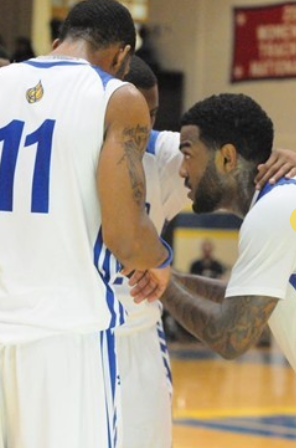Embrace Adversity: "The Power of Touch"
- by Matt Garnett
- Nov 29, 2017
- 4 min read
When I was coaching at Wayland Baptist University, we focused on creating a productive culture for our program. In my opinion, everyone’s culture tends to be positive when things are good. A culture seems to be defined by those moments of adversity. When the “storm hits,” our true culture would appear.
During the 2013-14 season, our team struggled with weathering what we described as the “storm” during games. When the other team made a run, early in the year, we did not handle these situations as well as we needed to in order to win at a high level. During a conversation with my high school coach, Kenny Hoffpauir, he mentioned that we should not talk about “handling” adversity. Instead, since adversity is inevitable within every competition, we should “embrace adversity and then defeat it.”
We began to use this terminology with our team. We focused on two things we had to tangibly do when adversity struck during a game:
1. “Touches” When adversity hit, we had to make an immediate effort to physically get together on the court. Whether it was a huddle, a high five or a simple fist bump, they had to “touch” the moment things started to shift on us.

2. “Body Language” While body language was incredibly important to our team at all times, we emphasized making an “immediate improvement” to our body language when things got tough. We believed that we could “breathe life” into each other in these moments of adversity.
We believed that an enhanced focus on these two areas during times of adversity would be physical evidence of our “trust” in each other. It is easy to say that we have trust in each other in a team meeting or when things are going your way. However, when things get difficult, we wanted our team to not only be prepared for these situations, we wanted them to actually “embrace” these moments since they felt prepared to beat them.
We created as much adversity in practice as possible through line-ups, officiating, etc. We wanted to see when they would crack and pull apart. When we did this in practice, we did not simply focus on the winning the competition on the scoreboard. We focused on simply doing these two things. We wanted to be “process oriented” in all that we did as a program. Learning to embrace and win the difficult moments of a game could only occur through a trust in each other, and that trust could not be solely based on the scoreboard being in our favor.
A UC Berkeley study concluded that there was a direct correlation between touches and a team’s performance.
Cal Tech basketball blog author Yang Yang discussed the following: “Anecdotes from successful point guards do seem to support the hypothesis. Just look at two-time MVP Steve Nash. The Suns had an intern record how many times Nash high-fived teammates in a game. The answer is 239. In this case, Nash does seem to build trust and cooperation through his numerous high-fives. Is there any wonder why the Suns went 60-15 with him (and were only 2-5 without) during his first MVP season?
A lot of blogs have featured the Berkeley study and just presented the conclusions at face value. "Touch each other more during games and you'll play better!" But is that really what was concluded in the study?
The paper mentions many ideas, but the main claim is that better bonding between teammates produces better team results.
As for team performance, it might surprise people that the authors didn't use total number of wins for each team. Instead, they used some statistics not found in a normal box score: offensive and defensive rebounding efficiency, assist ratio, rebound ratio, win score and NBA efficiency. This may surprise some people since, in practical terms, winning more is more often associated with performing better in basketball, but these statistics seem to predict future performance more effectively than total wins. That is because a lot of basketball analysis is done with knowledge of probability theory in mind. To statisticians, two teams playing a game is nothing more than a coin flip. Good teams maximize their probability to win, like weighing a coin to come up heads 90 percent of the time instead of 50 percent. Why look at teams this way? As one knows, with a normal coin, once in a while, the toss will get nine out of ten heads in a row (much like a .500 team goes on a long winning streak). Does that mean the coin will start flipping heads more? Now that would be a neat trick.
Instead of looking at how many heads versus tails came up in the past, a more accurate way to predict future coin flips is to measure where the center of gravity is in the coin. Rebounding efficiency, assist ratio, win score and NBA efficiency are supposed to be a basketball team's equivalent of the coin's center of gravity. But is playing a basketball game really as random as flipping a coin? It's too deep of an argument for this blog post, but I will say these statistics predict more winners in playoff series than just picking the team with a better record.
In my opinion, Coach Jay Wright’s program at Villanova embodies one of the most productive and healthiest cultures at any level of basketball. It is a way of life at Villanova. The following video features a glimpse into this culture at an early season tournament during the 2013-14 season.
We made the original version of this video for our Wayland team that same year. I believe the “power of touch” had a great impact on our team’s performance that year.















Comments